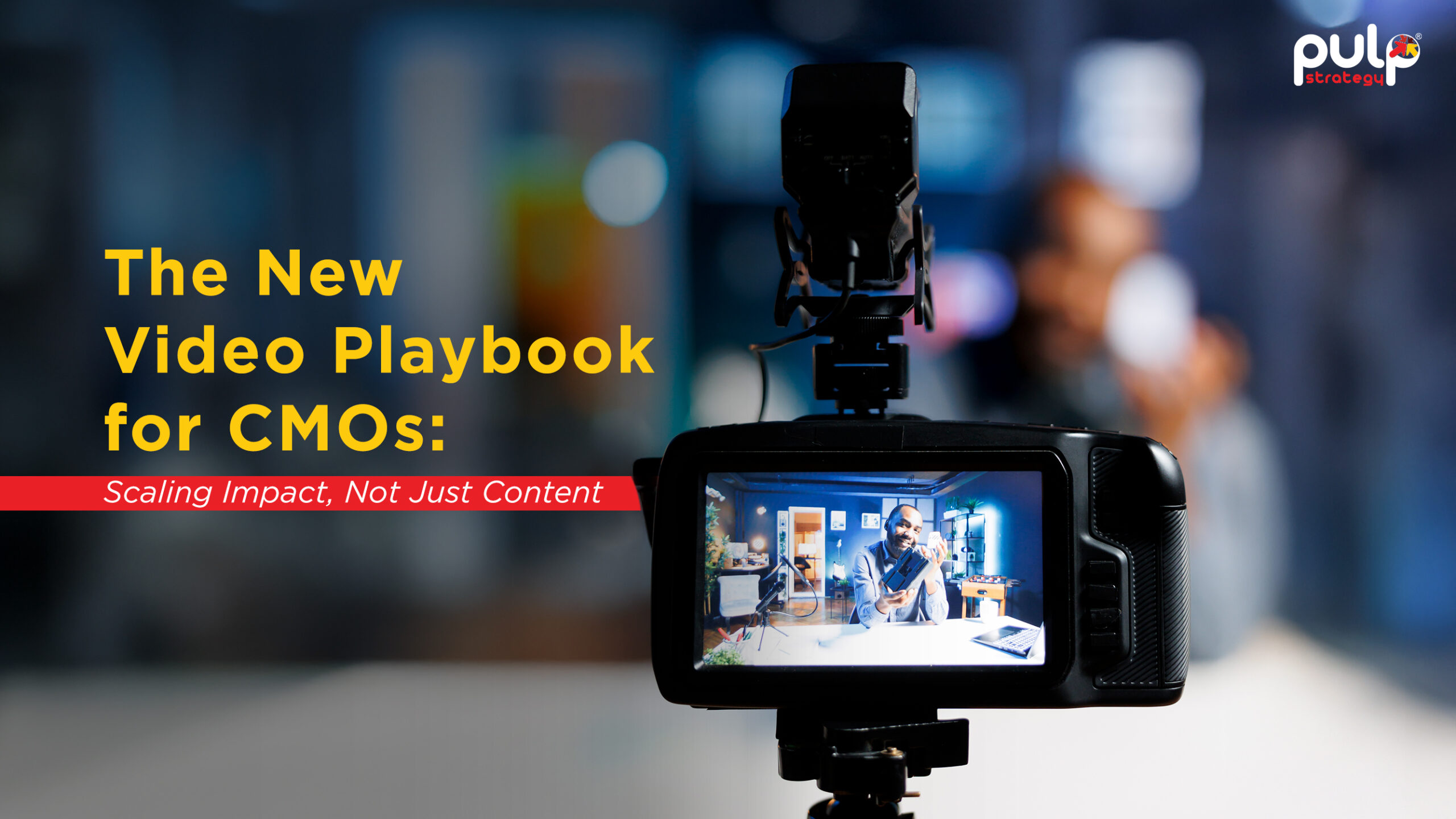The COVID-19 pandemic has changed the business landscape completely. Consumer behaviour has undergone a sea change, so is the buyer journey. According to the Pivot to Digital Report by Pulp Strategy, the use of digital media on the smartphone is now at 4h/day, up by 14% from pre-COVID-19 times. The consumers buying pattern has also changed with 32% of households (40% of households with children) significantly increasing their e-commerce spends in the pandemic period and 33% of households expecting their future online purchases to grow. On top of it, video content consumption has skyrocketed. By the end of 2020, it will increase to 100 minutes per day, and, by 2022, videos will constitute 82% of all content shared online.
These are radical shifts in consumer behaviour in every sense of the word, making brands to realign their content marketing strategies with them. In a nutshell, delivering engaging content is now more crucial for brands than ever before.
Content that addresses consumers' COVID-19 concerns is the need of the hour
The pandemic has impacted consumers in various ways. They have restricted their movements, their monthly income has reduced, and the fear of getting infected is omnipresent. The post-lockdown content strategy should take into account all this and help consumers overcome them.
Consumers now take health and hygiene very seriously. They avoid large gatherings and work from home. The content should win their trust by shedding light on the steps taken by the brand to ensure hygiene in the supply chain.
As income levels have been hit, consumers are likely to make more value-driven purchase decisions.
The content should highlight the value a particular product provides and how it helps meet the consumers’ current needs.
Consumers are increasingly getting very particular about the origin of the product they are buying. According to the Report, 65% of people favour buying goods and services from their own country.
The content strategy should lay particular emphasis on communicating local sourcing and production to enhance brand consideration and preference.
Deliver the right content at every stage of the evolved buyer journey
to ensure higher conversions
The buyer journey has also transformed in the wake of the COVID-19, which has made it imperative for marketers to provide different types of content at various stages of the buyer journey.
Awareness
As consumers are working from home, avoiding large gatherings and stepping out only when necessary, brands need to reach them online to share the information about their offerings. While doing so is the need of the hour, brands have limited marketing budgets. Therefore, the key to successful content creation lies in the optimum utilisation of available resources. Brands shouldn't concentrate or quantity; instead, they should focus on generating content that is in tune with the changed consumer behaviour for maximum impact. The following types of content will help brands spread product awareness.
- Use social media more effectively to position the brand as a solution provider, which helps meet the changed needs of the consumers. Bridge the gaps in social media strategy to engage consumers better. Align it with the changing times to make sure that consumers move from the awareness stage to the purchase stage smoothly. In a nutshell, make the most of social media platforms. For instance, Pinterest, despite not featuring among the top social media platforms, could be a gamechanger for a design-oriented brand.
- Conduct Expert Sessions around improving health and integrate your product value in it. For instance, ITC re-launched its ready to eat packs owing to the increased interest of consumers in home cooking. If your product relates to a hobby or learning space, create hobby groups and DIY live video sessions to reach out to the specific sets of audiences.
- Encourage your audiences to actively participate in your virtual events over the competition by organising them smartly. Break the clutter by providing them with memorable experiences. Create immersive experiences for your audience with thematic backgrounds and live sessions with industry experts. Share valuable content to assist them in overcoming their current and future challenges, and give them a platform to share their views and get their queries answered.
- Develop Blogs and long-format content based on an in-depth understanding of the new consumer behaviour and carrying out a detailed need analysis. Show how consumers can use your products to groom themselves better or cook mouth-watering delicacies at home without visiting a parlour or restaurant, respectively. Forge third-party collaborations to create branded content to reach a broad consumer base.
- Create videos to show how your product meets the new needs of the consumers and makes their life more comfortable. Forge tie-ups with influencers and third-party content platforms to create such videos and enhance their discoverability and reach.
- Invest in Targeted search ads (Amazon search ads) based on frequently searched keywords (like contactless delivery, boost immunity etc. fast delivery) to ensure easy discoverability of products online.
Engagement
With consumers staying mostly indoors, brands can only engage them online. Emerging technologies can help them in this endeavour, but without the right content, such engagement efforts will achieve limited success.
Organise digital product launches, virtual conferences, online exhibitions and training and webinars and deliver an experience similar to that of physical events. Share useful content to help consumers overcome their current challenges better, answer their queries and listen to their views. Allow them to explore how your product will make their lives easier and provide maximum value for their money through immersive product demos and live interactions via virtual retail and experience centres. Assuage their hygiene concerns by facilitating product trial from home with a combination of AI and AR/VR and Gesture control filters. Use AI chatbot to ensure that they don't have to step out of the house to fulfil their customers support requirements.
Consideration
The pandemic has made consumers a lot cautious about their purchases. They are spending more time evaluating the options available and making well-thought purchase decisions. The marketers need to provide them with the required content to accelerate their buyer journey. Enable your consumers to find out how your products are best suited to meet their evolved needs with product videos and virtual demos. Forge collaborations with independent bloggers to write online reviews about your product and why consumers should go for it. Inspire consumers to write positive comments and share their love for your brand. With strategically-placed engaging text and video content in Virtual showrooms, bring them an experience similar to physical stores.
Purchase
Consumers are now increasingly looking for value in their purchases. They expect brands to offer them exciting offers and deals to enable them to press the ‘BUY’ button. In line with this, the content should highlight how the product will meet consumer expectations and the incentives offered by the brand in terms of discounts and deals.
Retention
Use CRM to maintain an uninterrupted relationship with your consumers. Provide them with useful content that they can use to make their life better, build credibility by sharing thought leadership articles and share information on new product launches, special offers and deals to encourage them to try out your latest offerings.
If you are a B2C brand, use social media to engage your customers who are spending most of the time at home nowadays. Encourage them to share cooking, beauty, and styling tips, and makeup looks and shots of the delicacies prepared by them, and give them exciting prizes. It will bring a cheer on their faces and enable them to consider your brand favourably in the future.
Advocacy
Collaborate with third-party content creators to develop exciting content that consumers would love to consume and share on social media. Rope in influencers having a mass following to create video content for your brand, bloggers to write exciting content that consumers would love to read and share, and third-party content distribution platforms to spread your brand messaging far and wide. All this will build customer trust and will go a long way in enhancing brand preference and consideration.
In the post-lockdown world, the role of content marketing in spreading product awareness, and fuelling engagement, brand preference and consideration has increased manifold. Marketers need to catch this opportunity to transform their content marketing strategy in line with the changed consumer behaviour and the buyer journey to plan a faster recovery and growth.
Download the Pivot to Digital: 90 Days and Beyond Report
to get insights into current consumer trends and buying behaviours to navigate the post-lockdown business environment better.







